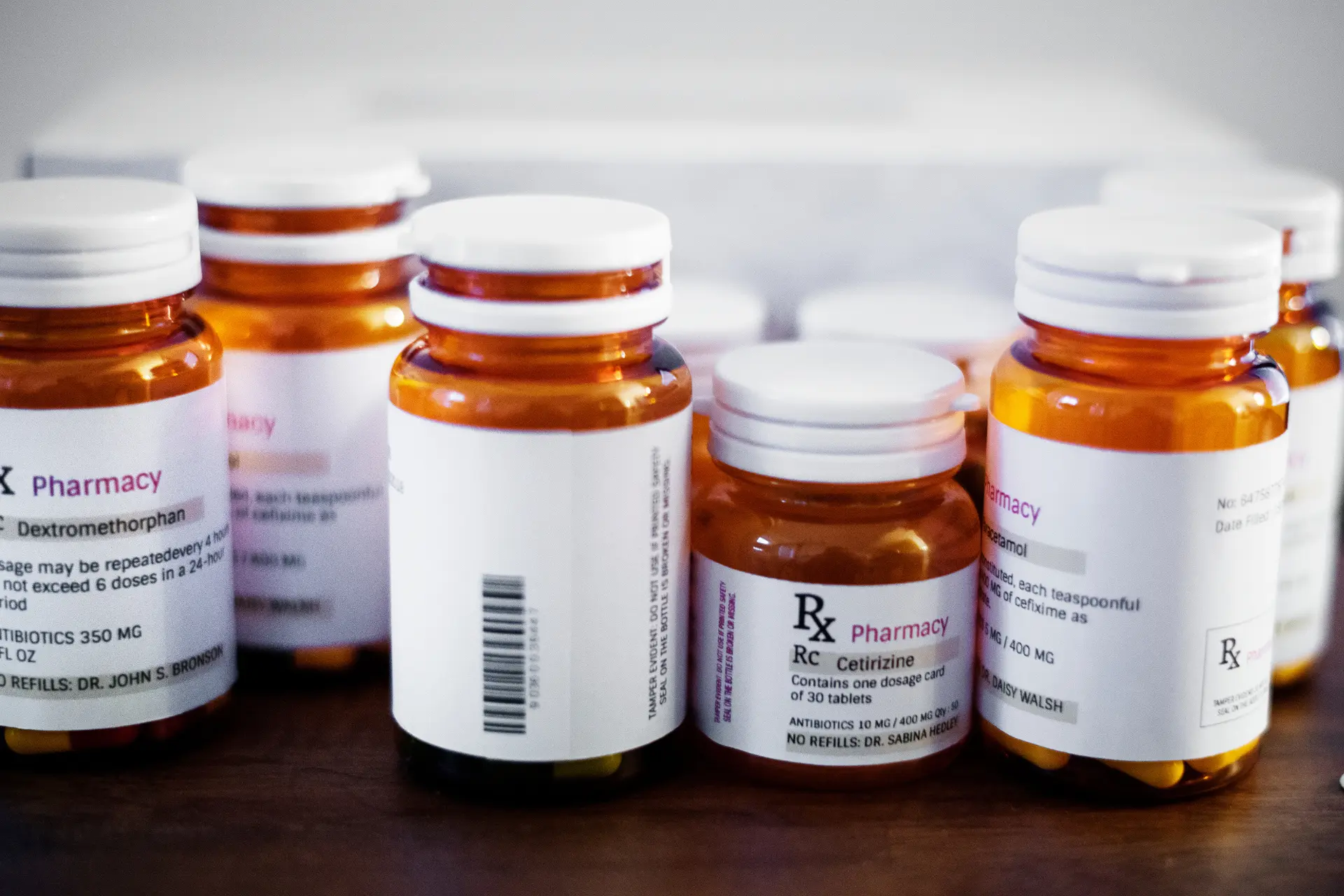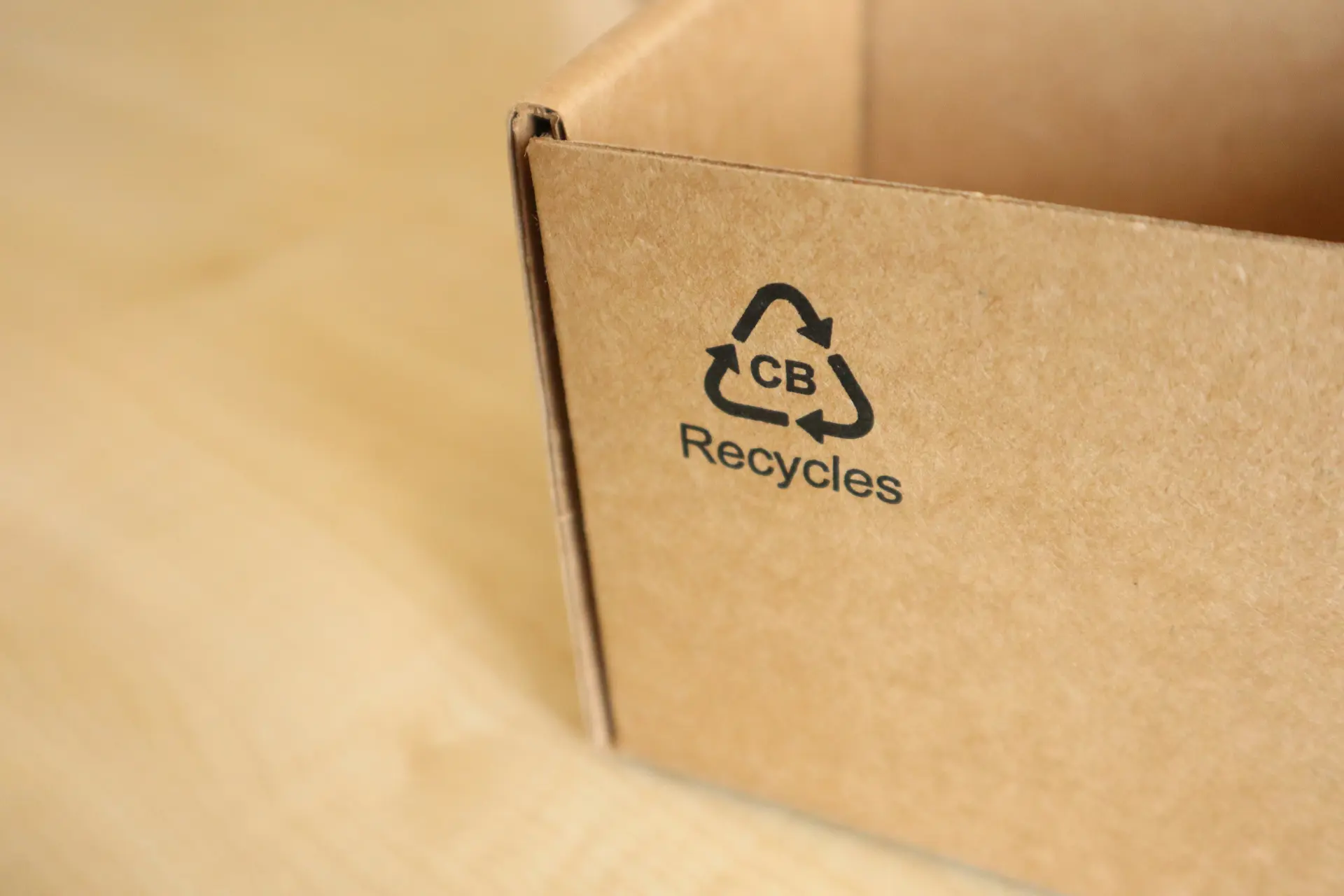Introduction to Extended Producer Responsibility in Pharmaceuticals
Extended Producer Responsibility is changing the way organisations manage packaging waste, and for the pharmaceutical sector, the impact is particularly significant. Medicines rely on complex and highly regulated packaging to ensure safety, stability and efficacy. As a result, pharmaceutical producers must prepare for new expectations around waste reduction, recyclability and the accurate reporting of packaging materials. EPR requires companies to take greater responsibility for what happens to packaging after consumers use it, shifting the burden away from local authorities and placing it firmly on manufacturers and brand owners.
What Is Extended Producer Responsibility?
Extended Producer Responsibility is an environmental policy that places financial and operational obligations on producers for the lifecycle of their packaging. Instead of relying on public services to manage waste created by consumer goods, EPR requires the companies placing packaging on the market to contribute to the cost of collecting, sorting and recycling it. Producers must supply detailed data about their packaging, ensure that their materials meet recyclability criteria and support the management of waste once products leave their control. The ultimate aim is to reduce environmental impact and encourage sustainable design choices.
Why Extended Producer Responsibility Matters for the Pharmaceutical Sector
Pharmaceutical packaging is more intricate than typical consumer goods packaging. Many formats include multiple layers of films, foils or plastics that are essential for product protection yet difficult to recycle. As EPR introduces higher fees for packaging that is challenging to process, pharmaceutical companies face pressure to rethink long-standing packaging designs. Beyond cost, EPR elevates expectations around packaging transparency, meaning that companies must maintain much more robust data, clearer disposal instructions and improved recyclability without compromising patient safety.
A Quick Overview of UK and EU EPR Developments
The UK has already introduced mandatory packaging data reporting, with full EPR fees expected to follow soon. These fees will be calculated based on the quantity and recyclability of each packaging item. In the European Union, the upcoming Packaging and Packaging Waste Regulation aims to standardise packaging requirements, strengthen recyclability criteria and introduce clearer labelling rules. Pharmaceutical companies operating internationally must keep pace with regulatory differences between markets, which places further emphasis on accurate data and controlled artwork processes.
How Extended Producer Responsibility Applies Specifically to Pharmaceuticals
The Unique Challenges of Pharmaceutical Packaging
Pharmaceutical packaging is required to meet strict safety, stability and regulatory standards. Blister packs, vials, sachets and folding cartons often use multi-layered structures to provide barrier properties, dosage control, tamper evidence and child resistance. These materials are purposefully engineered to protect sensitive products, which means they are often difficult or impossible to recycle through conventional waste streams. EPR puts pressure on producers to maintain these safety features while improving sustainability.
Hazardous and Non-Hazardous Waste Streams
Medicines sit within strict waste categories. While empty packaging may be harmless, unused or expired medicines can be hazardous and require safe disposal. EPR frameworks incorporate this complexity by encouraging producers to support or contribute to schemes that handle medicine returns, community drop-off points and public education on safe disposal. These efforts help protect the environment and uphold public health.
Patient Safety and Disposal Requirements
Clear and consistent on-pack disposal instructions are an important part of EPR. Pharmaceutical products may include components such as blister packs, bottles, leaflets or syringes. Each of these items may require different disposal methods depending on local waste infrastructure. Accurate labelling and clear guidance help patients understand how to dispose of packaging responsibly without risking harm to themselves or others.
Differences Between Over-the-Counter and Prescription Packaging
Over-the-counter products tend to come in a wider variety of packaging styles, driven partly by branding and consumer appeal. Prescription medicines, while often more standardised, still rely heavily on blister packs and multi-component designs. Both categories fall within the scope of EPR, but companies manufacturing OTC products may experience a greater range of complexity due to the diversity of formats, materials and pack sizes.
Key EPR Obligations for Pharmaceutical Producers
- Packaging Reporting and Data Accuracy: Pharmaceutical producers must provide detailed packaging data for every component they place on the market. This includes weight, material type, recyclability information and annual volumes. Accuracy is essential because reporting directly influences fee calculations and compliance status. Many pharmaceutical companies manage thousands of SKUs, making data accuracy an ongoing challenge.
- Material Composition and Recyclability Criteria: One of the most significant aspects of EPR is the incentive to use more recyclable materials. Multi-layer films, aluminium-plastic laminates and other complex structures that are common in the pharmaceutical sector may incur higher fees because they are harder to recycle. As a result, the industry is exploring new mono-material designs and innovative high-barrier materials that maintain product safety while reducing environmental impact.
- Take-Back Schemes and Medicine Return Programmes: Pharma companies may be required to participate in or contribute to national take-back programmes for unused medicines. These help ensure expired drugs are not thrown away with household waste or flushed down drains, which can contaminate water supplies or harm wildlife. EPR strengthens the expectation that producers help fund or support these systems, improving environmental outcomes.
- Labelling Requirements for Pharmaceutical Packaging: Clearer recycling and disposal instructions are expected on packaging. Labels may need to specify whether materials are recyclable, explain how to separate components or provide guidance for products such as aerosols, injectables or child-resistant packs. This places additional demands on artwork teams, who must manage frequent changes without compromising regulatory accuracy.
- Environmental Fees and Compliance Costs: Environmental fees are calculated based on how much packaging a producer places on the market and how well those materials perform in recycling systems. More recyclable materials may cost less to place on the market, while complex structures may incur higher fees. This creates a financial incentive for pharmaceutical companies to reassess packaging choices.
The Operational Impact of Extended Producer Responsibility on Pharmaceutical Supply Chains
R&D and Formulation Considerations
EPR requires R&D teams to incorporate sustainability much earlier into product development. Packaging that once focused entirely on stability and patient safety must now also consider recyclability, material efficiency and the availability of alternative structures. This may involve rethinking established formats, exploring new barrier materials or assessing whether certain secondary packaging elements are still necessary.
Artwork and Label Adaptations
Artwork teams face a growing workload as EPR introduces new labelling requirements. Each new symbol, disposal instruction or regulatory update must be integrated accurately and consistently across large portfolios. Even small changes can trigger a full artwork review and approval cycle, especially in pharmaceuticals where mistakes can delay market release or create compliance risks.
Supplier and Contract Manufacturer Collaboration
Pharmaceutical supply chains often involve multiple manufacturing partners, packaging suppliers and print providers. EPR increases the need for unified data and consistent specifications. Without clear communication and centralised systems, it becomes difficult to ensure that every supplier uses the correct materials, weights and artwork files, which can lead to reporting errors or inconsistent packaging.
Product Lifecycle Management Under EPR
The entire lifecycle of pharmaceutical packaging is affected by EPR. Packaging specifications must be reviewed more regularly, artwork updates must be tracked and approved, and companies must ensure that data remains accurate throughout the year. Regulatory changes may occur frequently, meaning packaging must be future-proofed and adaptable.
Managing Frequent Regulatory Changes
New recycling rules, labelling standards and packaging requirements may appear with little notice. Pharmaceutical teams need systems that allow rapid updates to avoid outdated artwork staying in use or non-compliant packaging entering the supply chain.
Ensuring Cross-Market Packaging Consistency
For pharmaceutical companies operating across multiple countries, maintaining consistent branding while meeting individual market regulations is challenging. EPR amplifies this by introducing another layer of local variation, making controlled workflows and accurate version management even more important.
How EPR Influences Packaging Design for Pharmaceuticals
Designing for Recyclability
EPR has placed recyclability at the heart of packaging design. For pharmaceuticals, this means rethinking components so they can be easily processed by existing recycling systems. Designers must find ways to maintain barrier integrity and safety while selecting materials that can be efficiently recycled. This may include simplifying structures, reducing coatings or selecting materials that can be more easily separated by waste processors.
Minimising Material Use Without Compromising Safety
Reducing packaging materials helps lower both environmental impact and EPR costs. However, pharmaceuticals cannot compromise on sterility, protection or patient usability. Brands are now assessing whether traditional pack formats can be simplified or whether digital leaflets, QR codes or redesigned cartons can reduce paper use without affecting compliance.
Innovations in Sustainable Pharma Packaging
Innovation within pharmaceutical packaging is accelerating as companies seek to meet EPR expectations. Recyclable blister packs made from single materials are becoming more common, providing a more environmentally friendly alternative to aluminium-plastic laminates. Some over-the-counter brands are experimenting with compostable or bio-based materials. However, these require thorough testing to ensure stability and compatibility with medicine formulations. Digital traceability is also becoming more attractive, reducing reliance on large printed leaflets and allowing regulatory information to be updated digitally.
Common Compliance Risks for Pharma Companies
- Inaccurate Packaging Data Submissions: Many pharmaceutical companies still rely on manual spreadsheets to manage packaging information. This increases the risk of incorrect weights, misreported materials or missing components. Because EPR fees and compliance depend heavily on accurate data, even small errors can have significant consequences.
- Complex Multi-Component Packaging: Pharmaceutical products often include several components, from blisters and bottles to cartons and leaflets. Tracking each part without a centralised system is difficult, and inconsistent data collection can lead to reporting failures or duplications.
- Outdated Artwork and Regulatory Text: Artwork changes occur frequently in the pharmaceutical industry. EPR adds further complexity by requiring new symbols and disposal instructions. If artworks are not updated promptly or if outdated assets remain in circulation, companies risk non-compliance, delays or costly reprints.
- Coordination Issues with Third-Party Manufacturers: Third-party manufacturers play a major role in the production of pharmaceutical packaging. Incomplete or inconsistent communication between partners can lead to incorrect materials, old specifications or misaligned artwork files being used. Without a unified workflow, it becomes difficult to maintain oversight.
How 4Pack Supports EPR Compliance for Pharmaceuticals
4Pack offers a comprehensive solution that helps pharmaceutical companies improve packaging governance, maintain accurate data and manage artwork across global teams. Its platform is built to support the complex demands of highly regulated industries. It is a powerful tool for managing EPR compliance.
Centralised Packaging and Artwork Management
By storing all packaging specifications, artwork files and related documents in a single platform, 4Pack eliminates confusion and reduces the risk of outdated assets being used. Teams no longer have to search through email threads or shared drives to find the latest version of a file.
Automated Workflows for Approvals and Version Control
EPR demands accuracy and timeliness, and 4Pack supports this by automating approval workflows and tracking every version change. This ensures that teams always work from the correct files and that nothing moves forward without the right checks and sign-offs. Automated reminders help prevent delays, while audit trails support full compliance visibility.
Accurate Data Capture for EPR Reporting
With packaging data connected directly to approved specifications, 4Pack ensures that information used for EPR reporting is accurate and consistent. This reduces reliance on manual spreadsheets, minimises errors and provides confidence that submissions reflect real-world packaging.
Ensuring Regulatory Consistency Across Markets
Different markets have different rules, and 4Pack helps teams manage these variations. Regulatory text, symbols and local requirements can be controlled within the system, ensuring artworks remain compliant wherever a product is sold. Teams gain the clarity needed to maintain consistent branding while adhering to regional requirements.
Reducing Risk and Strengthening Governance
The platform’s governance tools, including permissions, audit trails and controlled workflows, help reduce compliance risks. Pharmaceutical companies benefit from greater visibility, fewer errors and confidence that packaging and artwork follow the correct processes.
Why Pharmaceutical Teams Choose 4Pack
Pharmaceutical organisations value 4Pack because it supports fast, accurate artwork production and reduces the complexity of packaging management. It enables better collaboration with suppliers, ensures that data remains reliable and helps organisations adapt quickly to regulatory changes.
Book a Demo with 4Pack
A personalised demo shows how 4Pack strengthens packaging governance, simplifies artwork management and supports EPR compliance. You will see how packaging information flows through the system, how you can manage approvals and how you can apply regulatory updates quickly and consistently.
How 4Pack Fits into Your Pharma Compliance Strategy
4Pack supports pharmaceutical teams by offering a structured, transparent and scalable system. It improves accuracy, enhances collaboration and ensures packaging remains compliant throughout the product lifecycle. With EPR introducing new demands across the sector, digital tools like 4Pack have become essential for maintaining efficiency and control.
Booking a demo is straightforward, and the 4Pack team will tailor the session to your organisation’s needs. You will be able to explore how the platform aligns with your workflows and how you can implement it to support EPR and broader compliance objectives.
Conclusion: The Future of Extended Producer Responsibility in Pharmaceuticals
EPR is introducing long-term change across the pharmaceutical sector. As policymakers continue to push for greater sustainability, companies must adopt new materials, strengthen their reporting capabilities and rethink packaging designs. Those who embrace these changes early will gain a better position to stay compliant and maintain efficiency.
With growing regulatory pressure and the need for greater transparency, the pharmaceutical sector can no longer rely on manual processes. Digital transformation is essential. Platforms like 4Pack provide the visibility, control and efficiency required to meet EPR expectations and future-proof packaging operations.



